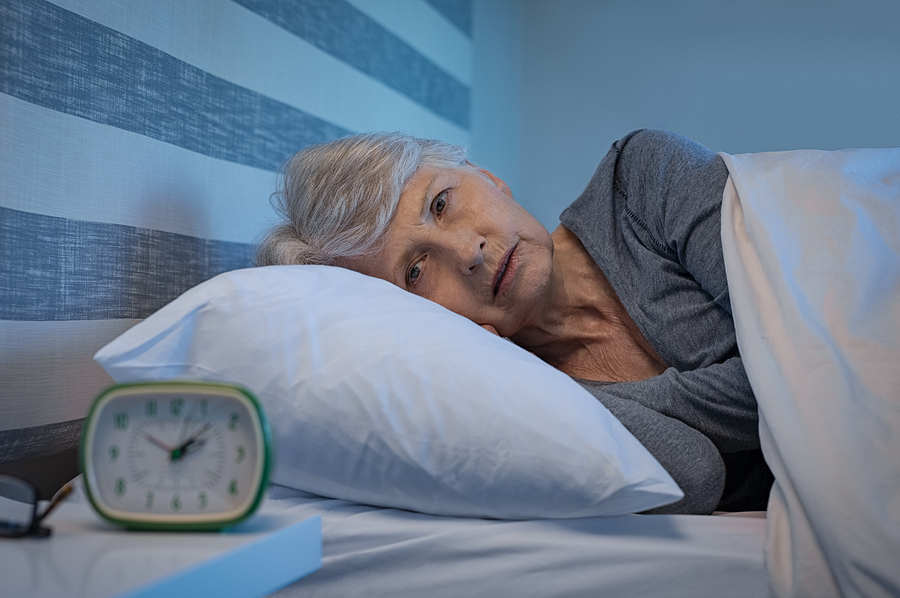5 ways to tackle insomnia by improving your sleep ‘stimulus control’
Dr Shelby Harris is on a mission to help women get better quality sleep. Lisa Salmon finds out more.
Not being able to sleep can be a waking nightmare – and it’s a problem that commonly blights the lives of many more women than men.
Research suggests that from adolescence to their early-50s, for every two men with insomnia there are three women, and around 11% of women have chronic, unremitting insomnia.
Behavioural sleep expert Dr Shelby Harris (drshelbyharris.com) is determined to help. The New York-based specialist, who treats a wide range of sleep disorders, has just written the new book – The Women’s Guide To Overcoming Insomnia – and says the fact this sleep problem is more common among women is not a coincidence.
“Insomnia is not gender-blind. Women, unlike men, are susceptible to significant hormonal fluctuations throughout the lifespan – from preadolescence through menopause,” explains Harris. “When combined with life stressors of work, family and trying to fit everything in at once, it should be no surprise that women struggle with turning off their brains to obtain a solid, quality night of sleep on a regular basis.”
She says one of the most effective treatments for insomnia is stimulus control, in which the body and mind are trained that the bed is only for sleep and sex, thus helping to gradually shift the active brain into a quieter state when it gets into bed.
Curious to learn more? Here, Harris shares five stimulus control methods to help you get a consistently good night’s sleep…
1. Go to bed only when sleepy
When we begin to have trouble with sleep, we get into bed hoping sleep is an on/off switch. Instead, we typically stay there, tossing and turning (or staying still, watching TV, reading, etc) and wait for sleep to come. This teaches the body that the bed is a place for forcing sleep to happen, even if not sleepy.
Instead, if you’re sufficiently sleepy – not just tired but actually sleepy (yawning, can’t keep your eyes open), you’ll fall asleep much faster, night after night. Don’t force it, get into bed when you’re sleepy, not when you ‘think’ it’s the right – or ‘normal’ time to get to bed.
2. The bed is only for sleep
Many people find they’re sleepy on the couch before bed, but once they get into bed their brains wake up and sleep won’t come. This is because the more that people have insomnia, the more they spend time in bed awake, trying to force sleep to happen – or even just lying in bed tossing and turning or watching TV. The more you pair the bed with awake activities, the more your body thinks the bed isn’t just for sleep but is also for wake. If you only use the bed for sleep and sex, your body begins to re-learn that those are the activities allowed in bed.
To do this, get in bed when you’re sleepy. Don’t look at the clock – it only serves to worsen your sleep. If you feel your brain is too active you begin to get frustrated, or you approximate that 20 minutes have passed (don’t be exact here as that leads to clock-watching), get up and sit in a different room. Do something quiet, calm and relaxing in dim light (eg. reading a book, puzzles, art – avoid screens as that can wake you up more). Return to bed only when you’re sleepy.
If you get in bed and can’t fall back to sleep, get up again after approximately 20 minutes and repeat. You might have to do this a bunch of times at night for a few weeks – but eventually, your body will hopefully learn that the bed is only for sleep and sex. Remember, getting out of bed isn’t meant to make you sleepy. Don’t expect reading to automatically be a sedative. It’s solely meant to be a placeholder so you aren’t in bed tossing and turning.
3. If you’re hesitant to get up because you think you’re about to fall asleep…
Give yourself the ‘one chance’ rule of 10 minutes. If you haven’t fallen asleep within 10 minutes, you fooled yourself. Go back and follow instruction number two.
4. The clock is – and isn’t – your friend
Keep a consistent bed and wake time as much as possible, as this helps keep your body clock set overall. Set the alarm clock for the same time every single morning — seven days a week. Our bodies don’t have a weekday and weekend clock that’s different internally.
Also, the clock isn’t your friend in the middle of the night. Once you get in bed, don’t look at it until the alarm goes off in the morning. Follow the rules of being in the bed for sleep or sex, but don’t calculate how long you’ve been awake for or how long you have until you need to get up in the morning. That makes you more anxious and creates more difficulty with falling asleep.
5. Don’t start your day until the alarm clock’s gone off in the morning
If you awaken routinely earlier than the alarm and begin eating, having coffee, turning on the TV or tablet, you’re beginning to teach yourself that the day is now starting earlier than you’d like. Instead, find something quiet, calm and relaxing to do in dim light to pass the time until you hear the alarm clock go off in the other room. At that point, feel free to start your day as you wish!
The Press Association
Latest posts by The Press Association (see all)
- Could brisk walking boost your heart? - April 16, 2025
- Best spring-to-summer plants to fill the colour gaps - April 15, 2025
- Catherine tells how ‘spiritual’ connection with nature gives her peace in busy world - April 15, 2025
- Why weeds are worth cultivating – and eating - April 14, 2025
- 5 top tips for cleaning your tech, from phones to laptops - April 14, 2025




















